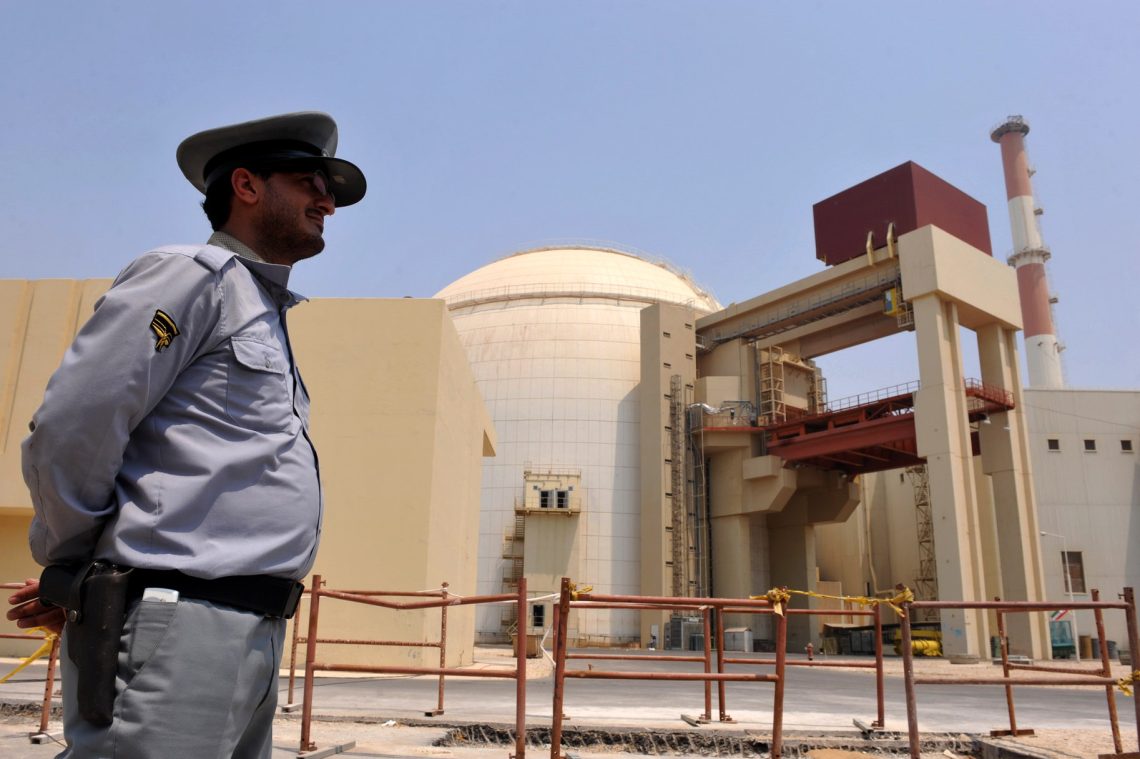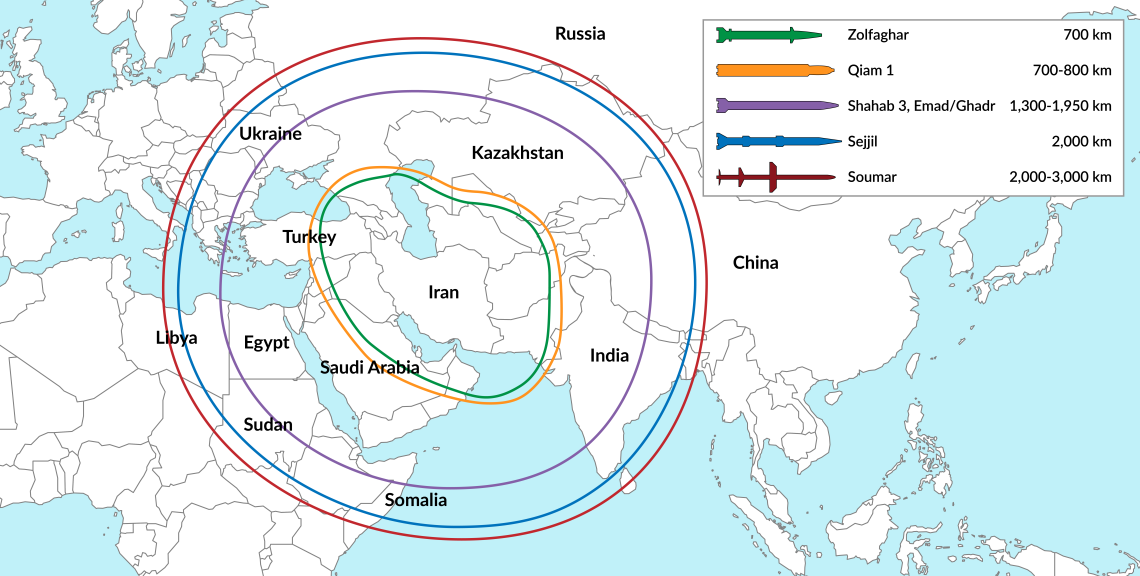Assessing the Iranian arms industry
Despite technological limitations, Tehran is intent on becoming a major weapons supplier on the global stage.

In a nutshell
- Despite severe sanctions, the regime is developing its arms industry
- Tehran acquires technical knowledge by scavenging foreign weapons
- Low-cost products could make Iran a go-to provider for rogue states
Tehran claims to have the most successful arms industry in the world despite decades of economic sanctions. The regime states that 5,000 knowledge-based companies are cooperating with its defense industry to develop innovative weapons. In November 2022, Iran launched a hypersonic ballistic missile for the first time. The aerospace commander of the Islamic Revolutionary Guard Corps (IRGC) General Amir Ali Hajizadeh described the event as “a great generational leap in the field of missiles.”
International experts have greeted this news with skepticism, as they are accustomed to exaggerations and inaccurate information from the Iranian regime. Tehran declared that the missile flies between Mach 8 and Mach 10, meaning it could reach Jerusalem in 400 seconds. It did not specify whether it is a hypersonic glide vehicle or a hypersonic cruise missile – and only the cruise variant can adjust direction midair and lock onto a target. But one thing is certain: Iran is openly challenging United Nations Resolution 2231, which prohibits it from developing missile launches using ballistic technology.
The internet and the dark web have now freed Iranian engineers from the constraints of geographic mobility.
The Iranian military industry does not care about UN directives. It has never stopped developing weapons, remaining resolute in the face of shifting geopolitical power relations.
From R&D to intelligence
When the Islamic revolution erupted in 1979, Iranian scientists were sidelined from international research programs. Access to conferences and scientific exchange has been severely limited by Western visa restrictions ever since. The regime filled the gap in its R&D laboratories by recruiting foreign scientists. The most famous was Abdul Qadeer Khan, the father of Pakistan’s nuclear program, who assisted Iran in launching its nuclear energy program. Iran also hired engineers from former Warsaw Pact countries. Georgians have long overseen the maintenance of the MIG fleet.
The internet and the dark web have now freed Iranian engineers from the constraints of geographic mobility. They practice open-source intelligence from their offices in Tehran. The most valuable information is collected on the battlefields of the Middle East, where Iranian forces have been engaged since the Arab Spring of 2011. Iran has become an operational power with ties to the governments of Syria and Iraq. It is also affiliated with several dozen militias that have become its proxies, the levers of influence of the mullahs’ regime.
Officers of the Iranian intelligence service scour conflict zones for new, used or partially destroyed military equipment. This practice, common to all armed forces, has enabled the Iranians to recover the remains of an Israeli drone shot down in Syria and parts of two American drones that collided during an anti-terrorist operation. One of their most notable captures is an American Lockheed Martin RQ-170 Sentinel reconnaissance drone that mysteriously disappeared while flying over Iranian nuclear facilities; it has been a major source of information for Iranian engineers. In Afghanistan, the Taliban granted Tehran permission to recover American equipment after forces withdrew. Humvee-type armored vehicles were transported to Iran via the Semnan-Garmsar police station.
Facts & figures
Iran’s ballistic missiles

All technical data is processed by the Iranian Ministry of Defense. The carcasses are dismantled piece by piece and plans are drafted to copy the most valuable technical innovations. The Shahed 171 reconnaissance drone, presented in 2014, is almost identical to the abovementioned RQ-170; likewise, the Saegheh unmanned aerial vehicle is very much inspired by its American equivalent.
This covert practice is experiencing setbacks. Sweden has officially charged Iran with trying to steal nuclear secrets. Norway regularly complains about Iranian students entering sensitive academic programs such as nuclear engineering. Tensions between secret services are sometimes settled Cold War-style: one of Iran’s top drone and air defense experts was recently killed by a booby trap while driving south of Damascus. Although the Israeli press reported the information, a special operation was never officially acknowledged.
Secret weapons factories
The Defense Industries Organization (DIO) is responsible for guaranteeing Iran’s operational autonomy, from the supply of a simple cartridge to the production of sophisticated weapons. It is estimated that 200 to 240 production sites are dedicated to this task. Paradoxically, the best-known aspect of the Iranian defense industry is its nuclear activity. International Atomic Energy Agency experts have acquired detailed knowledge of Iranian installations during periods of negotiations, despite Tehran’s refusal to accept monitoring visits. The National Council of Resistance of Iran (NCRI) is participating in efforts to catalog Iran’s military arsenal. It revealed the existence of a new nuclear site in 2020 located near the Damavand highway east of Tehran, two kilometers on the exit road to Sorkheh Hessar.
An Iranian drone costs $20,000 to $50,000, compared to $3 million for the Russian equivalent.
Iran seldom discloses the precise location of its industrial activities. One way to draw a map is to monitor attacks by foreign forces operating secretly on Iranian territory. Six anonymous drones destroyed several hundred unmanned aerial vehicles at a military base in Kermanshah in March 2022. Others targeted the industrial site of Tabriz and the military complex of Parchin, located on the outskirts of Tehran.
Factories are not only located on Iranian soil. According to Israeli Defense Minister Benny Gantz, Tehran uses a dozen sites in Syria to produce weapons. A drone manufacturing platform was recently inaugurated in Tajikistan to produce the Ababil-2, a multipurpose aircraft with intelligence-reconnaissance abilities. Industrial ties with Venezuela have been documented for many years. Drones are produced there, and Venezuelans supply parts via Mahan Air, an airline close to the Revolutionary Guards.
These factories assemble parts made in Iran, but also abroad. Some drones sold as Iranian are patchworks. Proof of this was obtained in Ukraine when the Ukrainian army successfully hacked and took control of an Iranian Mohajer-6. After a safe landing, the aircraft was stripped. Of its components, 75 percent were originally produced in the United States, and its infrared lens had been copied from a model in the catalog of an Israeli firm.
Tehran’s trade policy
The Iranian regime has taken advantage of the stalled Joint Comprehensive Plan of Action negotiations and the war in Ukraine to try to break out of its pariah state status and test its weapons catalog in a non-asymmetric interstate conflict. Shahed-136 killer drones were delivered to the Russian military. Moscow paid 140 million euros and gave the Iranian industry three precious models of armaments that will be studied and certainly copied: the U.S. Javelin anti-tank missile and Stinger anti-aircraft missile and the British NLAW anti-tank missile.
Iran wants to prove that its low-cost weapons belong on battlefields between world powers. An Iranian drone costs $20,000 to $50,000, compared to $3 million for the Russian equivalent. It is supplied with guidance by a team of experienced instructors. Although sluggish and primitive, these drones can still destabilize the adversary’s air and missile defense system. They are also costly to destroy. For each drone shot down, Ukraine spends twice as much as its price, which drains resources.
According to Tehran, 22 countries have already submitted offers to buy its drones, including Algeria, Armenia, Serbia and Tajikistan. The prospects are promising in an economic context where the cost of wars has amounted to nearly 11 percent of global gross domestic product in 2021.
While the great powers fight their wars, market shares are up for grabs in a budget-minded defense economy.
Iran’s trade policy is both transparent and opaque. Tehran publishes reports of its annual defense spending, but its military programs operate in complete secrecy. When the regime claims to be testing a launcher to put the Qaem-100 satellite into orbit, no one knows whether this is the truth except for one or two intelligence agencies in the world. If Iran is announcing it, it is certainly working on it, which is worrisome because it hints at a possible space war.
New weapons appear with each conflict. In 1914-1918 it was the tank and the plane, then the V2 rockets in 1939-1945. The Ukrainian battlefield will probably be marked by electronic warfare heralding the coming of robotized combat. Unlike previous confrontations, states are using low-cost weapons assembled with low-end components and explosives purchased on the cheap. The Iranians understand this. While the great powers fight their wars, market shares are up for grabs in a budget-minded defense economy.
Scenarios
Iran becomes a major supplier for the Russian army without international consequences
Tehran’s reputation for low-cost but effective arms eventually imposes itself on this competitive market segment, already coveted by the Turks. A gentleman’s agreement is reached with Moscow and Beijing, who share the market for conventional arms sales. The Iranian industry becomes the privileged interlocutor of failed states and nations that, if not hostile to the anti-Western bloc, are eager not to be in the American fold.
Tehran faces significant backlash for delivering arms to the Russian forces in Ukraine
The U.S. and Israel step up the pressure. Until now, sanctions have been economic. Faced with the proliferation of Iranian weapons, the Americans and Israelis undertake a series of operations to neutralize Iranian proxies. Iranian assistance programs to the Houthi rebels are bombed. Boarding of suspicious cargoes and harassment of spy boats becomes systematic. Strikes by pro-Iranian militias in Iraq multiply. An alliance of armed groups under a unified command is created in Syria to fight against Iranian presence. All visible or proven forms of Iranian expansionism are hindered, breaking Iranian regional dynamics. The West bets on the deterioration of Iran’s domestic situation and, in the long run, the fall of the regime.








